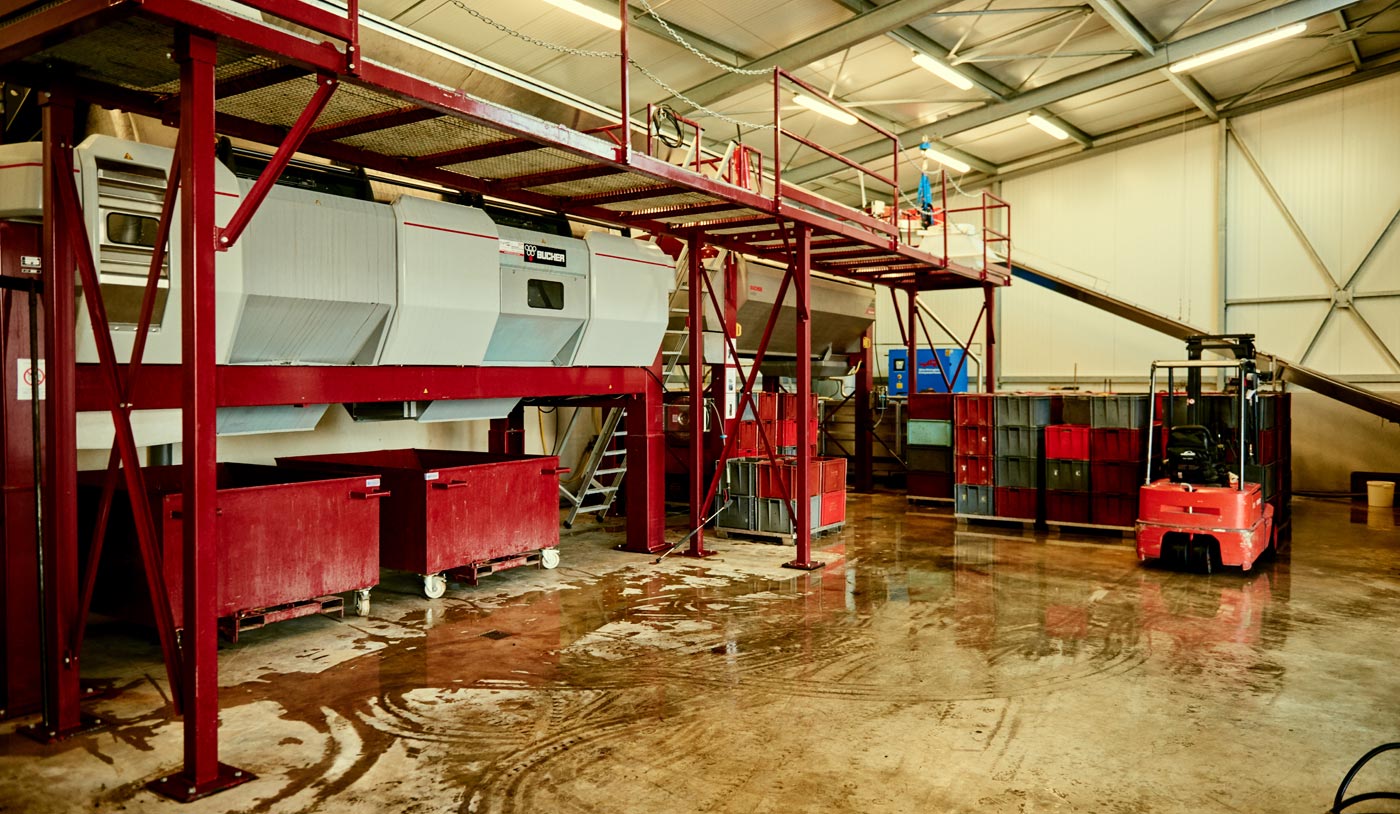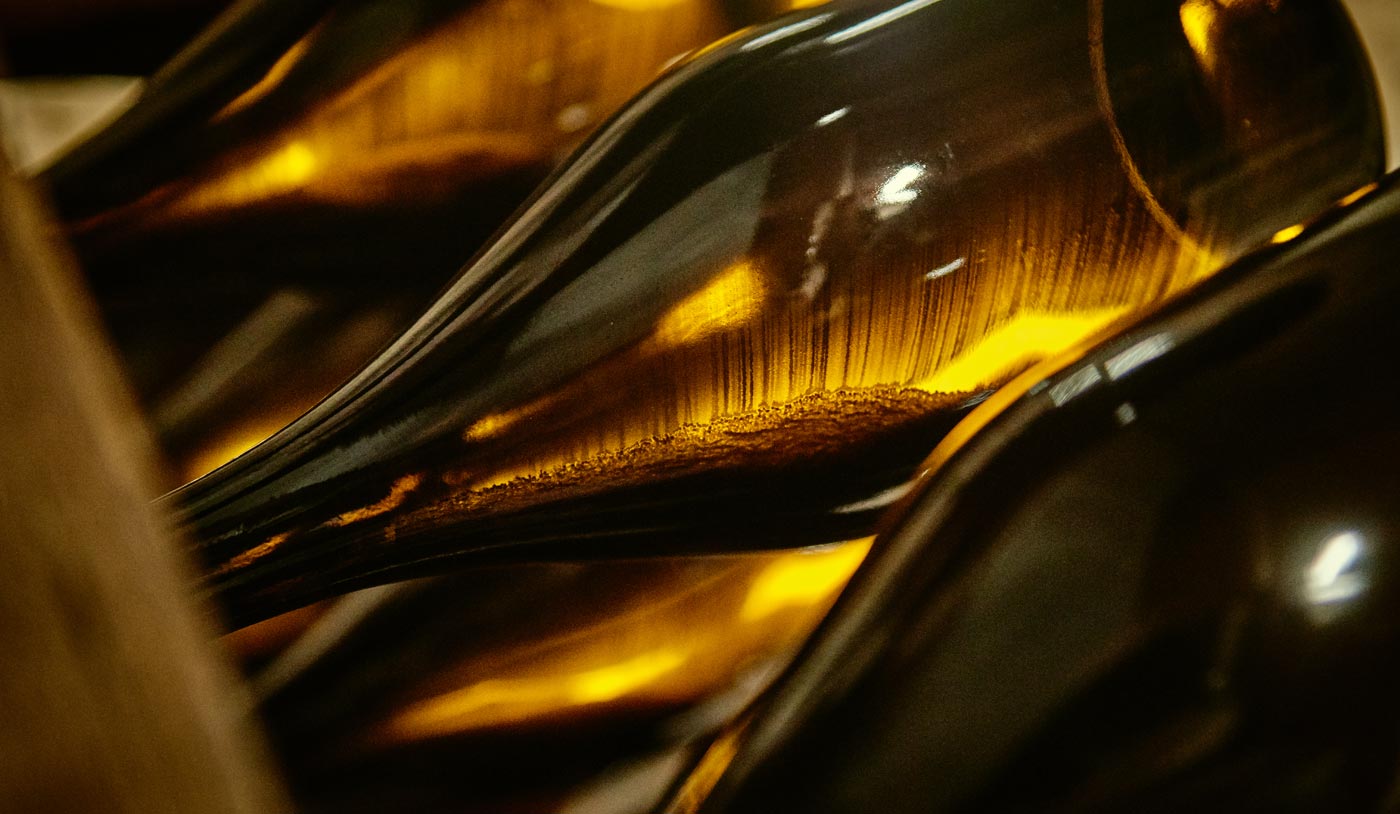
Comte de Montaigne is a unique champagne also because the vineyard has a prominent importance compared to the stages of the cellar, unlike many others. The bond with the terroir, also from the point of view of the taste, becomes very strong. From the grape harvest to the cellar, until the champagne ready to be sold, we prefer tradition, hard work and heart of everybody who works on it.

During the grape harvest, the grapes come from different plots. The best ones then are used on the assemblage (preparation of the cuvées).
THE PRESSING. The grapes are pressed directly on the presses, then they are put in the vats, where the first fermentation begins. Others ferment also in separated vats. Beyond the characteristics of their vine varieties, these wines present the typicalness of the plot of origin. That’s why there is an extraordinary range of wines, which allows to create our assemblages.


THE ASSEMBLAGE. The preparation of the assemblages is carried out between January and April, where the different cuvées created by the first fermentation are tasted regularly. Fo this work it takes time, because this product evolves constantly. At the end of different tasting, only the selected wines can be part of Comte de Montaigne. To each Cuvée corresponds a specific assemblage.
THE SECOND FERMENTATION AND THE AGEING OF YEASTS. Once finished the assemblage, the wines are bottled with the addition of yeast for the second fermentation. Each bottle has a temporary cork (crown cork). In Comte de Montaigne the ageing of yeasts is more than three times higher compared to the minimum requested by the procedural guideline. This to give more complexity to the wines. The bottles are aged for 36 months, without any light and oxygen, at a constant temperature of 10,5 degrees. The second fermentation takes place during the first months in the cellar: the closed bottle doesn’t allow the carbon dioxide to leave. This gas dis-solves in the wine in millions of bubbles, which sharpen during the long months of rest, to give that thin effervescence that is typical of the Comte de Montaigne champagne.




THE REMUAGE. After a long rest, the yeast forms a sediment. It is necessary to concentrate it in a single point of the bottle: the cork. So the remuage begins. The rotations of the pallets have to be regular and made precisely, this is necessary for the quality of the remuage and consequently for the wine brilliance.
THE DISGORGEMENT. After 8/10 days of remuage, the bottles are with the head down (a process called “sur pointe” in French), with the sediment perfectly concentrated on the cork, ready to be open.
The sediment formed by the yeasts has to be ejected to obtain a clear and bright wine. This procedure is called disgorgement. At this point the neck of the bottle and its sediment are frozen at a height of around 3 cm and at -25 degrees Celsius. This allows an opening of the bottle upright, an easy exit of the sediment and limited leaks and, above all identical for every bottle. Starting with the disgorgement begins a process of natural ageing of the cuvées.
THE DOSAGE. During the disgorgement, one or two centilitres of wine have been lost and have been replaced with some reserve wines that can contain some sugar, the so-called “expedition liqueur”.



THE HABILLAGE: Once the dosage is carried out, the bottles are closed with the cork and after few months they are labeled. At this point the bottles are ready.



